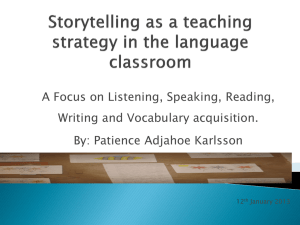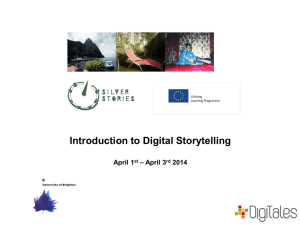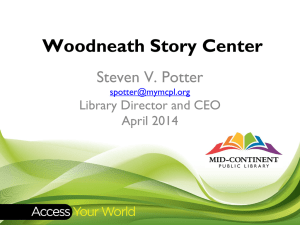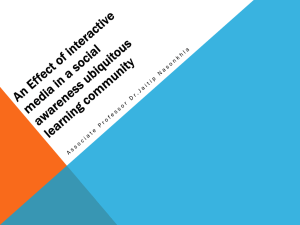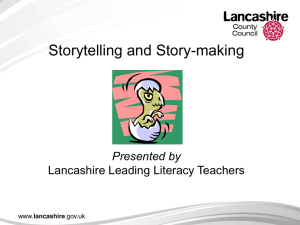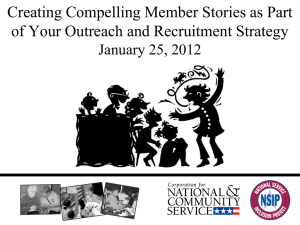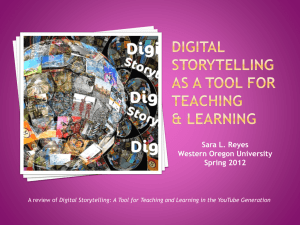Storytelling
advertisement
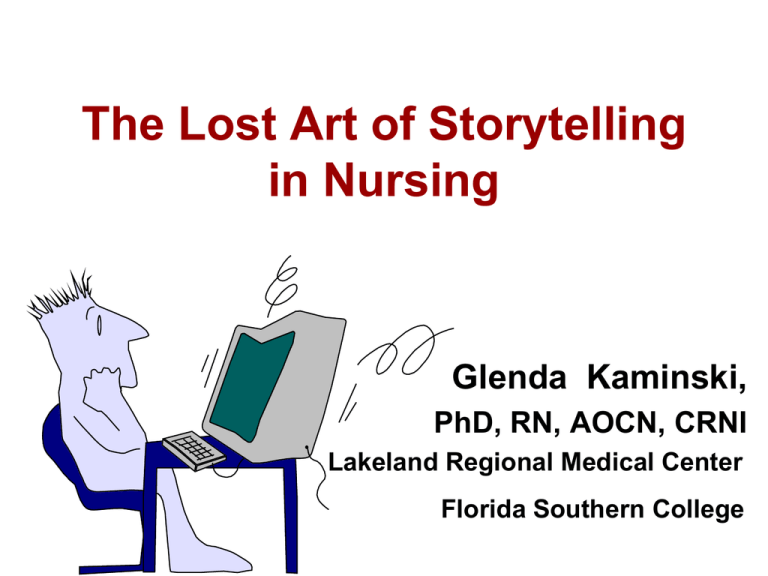
The Lost Art of Storytelling in Nursing Glenda Kaminski, PhD, RN, AOCN, CRNI Lakeland Regional Medical Center Florida Southern College Those of us with small ones Once Upon a Time . . . Is what we think about when ‘Storytelling’ is mentioned Those of us who are older “If you’ve heard this story before, Don’t stop me, Because I’d like to hear it again.” Groucho Marx (1890 – 1977) Concept of Storytelling What is it???? Essential to expression of the importance of our lives Fundamental form of communication Ancient tradition Narrative account Why? We tell stories because . . . – – – – – Witnesses Knowledge of essential life events Significant life events Exemplars Collective voice of Nursing Stories add to knowledge of the art and science of nursing Purpose of Storytelling • • • • • Preservation of history Transmission of values Building of the community of persons Promotion of healing Stories educate, motivate, and comfort others 5 Essentials of Storytelling: • • • • • Characters Event Interaction Setting Imagination The roots of the story are parables, rhetoric, folk lore, psychology, & anthropology Power of Stories • The difference between being a Tourist rather than merely a Traveler -- Stories provide a larger world view – Stories affirm and validate the ultimate mysteries of life – We become the hero!!! – We become strengthened in our failures -- We acknowledge those who often go unacknowledged! Attentively Embracing Story (Smith & Liehr, 1999) Attentively Embracing Story • Connecting with Self-inRelation – Personal history – Reflective awareness • Intentional Dialogue – Presence – Attentive embrace of story • Creating Ease – Flow in the midst of anchoring Exemplars • Trauma patient trying to make sense of the event that culminated in ICU admission • Pregnant high schooler • Middle-ager facing his mortality since being diagnosed with a chronic illness Benefits of Sharing a Story • Clear perspective on personal experience and feelings is gained, which brings greater meaning to one’s life • Cherished experiences and insights are shared with others • Joy, satisfaction, and inner peace are gained in sharing the story with others Russell & Timmons (2009) Encouraging Storytelling by Vulnerable Others • There are many reasons for vulnerable people to tell their stories. – Helps the patient come to understand their experience, legitimise their behavior and share their emotional experience with others. – Stories of people in physical or mental pain, or of those who experience illness and disability, are not often heard. – In the telling of stories, patients have the potential to regain the power to shape their own world and identity. Healing Effects of Shared Stories • • • • • Sharing Memory Connecting with another Recognizing Trust and Hope Creating Reality Visioning the future You can inspire and educate others by beginning to develop your own collection of favorite stories! • Who told you the stories? • What made them meaningful? • What emotions are evoked when you recall the story? • Could this story be used to motivate or inspire another? In the Clinical Setting • What learning outcomes do you hope for when you use storytelling with Patients? Families? Other nurses? • How do you assess these outcomes? • What has the response been to your storytelling? • How do you decide when to use storytelling? • What challenges did you encounter in telling or listening to stories in the clinical area? Implications for Research • How does one’s story bear on their – – – – Strategies for decision making? Trust & reliance on support systems? Treatment selections? Response to interventions? • Framework of narrative nursing – – – – Patient engaging in intentional dialogue Mutual goal-setting Patient and staff satisfaction Bridge between hi tech and hi touch Questions? References Cangelosi, P. R., & Sorrell, J. M. (2008). Storytelling as an educational strategy for older adults with chronic illness. Journal of Psychosocial Nursing, 46(7), 19-22. Charon, R. (2006). Narrative medicine: Honoring the stories of illness. New York, NY: Oxford University Press Liehr, P. & Smith, M.J. (2000). Using story theory to guide nursing practice. International Journal for Human Caring, 4(2), 13-18. Smith, M.J. & Liehr, P. (1999). Attentively Embracing Story: A middle-range theory with practice and research implications. Scholarly Inquiry for Nursing Practice: An International Journal, 13(3), 187-204. Sunwolf (2005). Rx storytelling, prn: Stories as medicine. Interdisciplinary Journal of Storytelling Studies, 1(2), 1-10. References • Holm, A. K., Lepp, M., & Ringsberg, K. C. (2005). Dementia. Involving patients in storytelling: a caring intervention. Journal of Clinical Nursing, 14, 256-263. • Ibarra, H., & Lineback, K. (2005). What’s your story? Harvard Business Review, 83(1), 1-9. • Russell, C. & Timmons, S. (2009). Life story work and nursing home residents with dementia. Nursing Older People, 21(4), 2832. • Williams, S. L (2009). Recovering from the psychological impact of intensive care: How constructing a story helps. Nursing in Critical Care, 14, 281-288.
